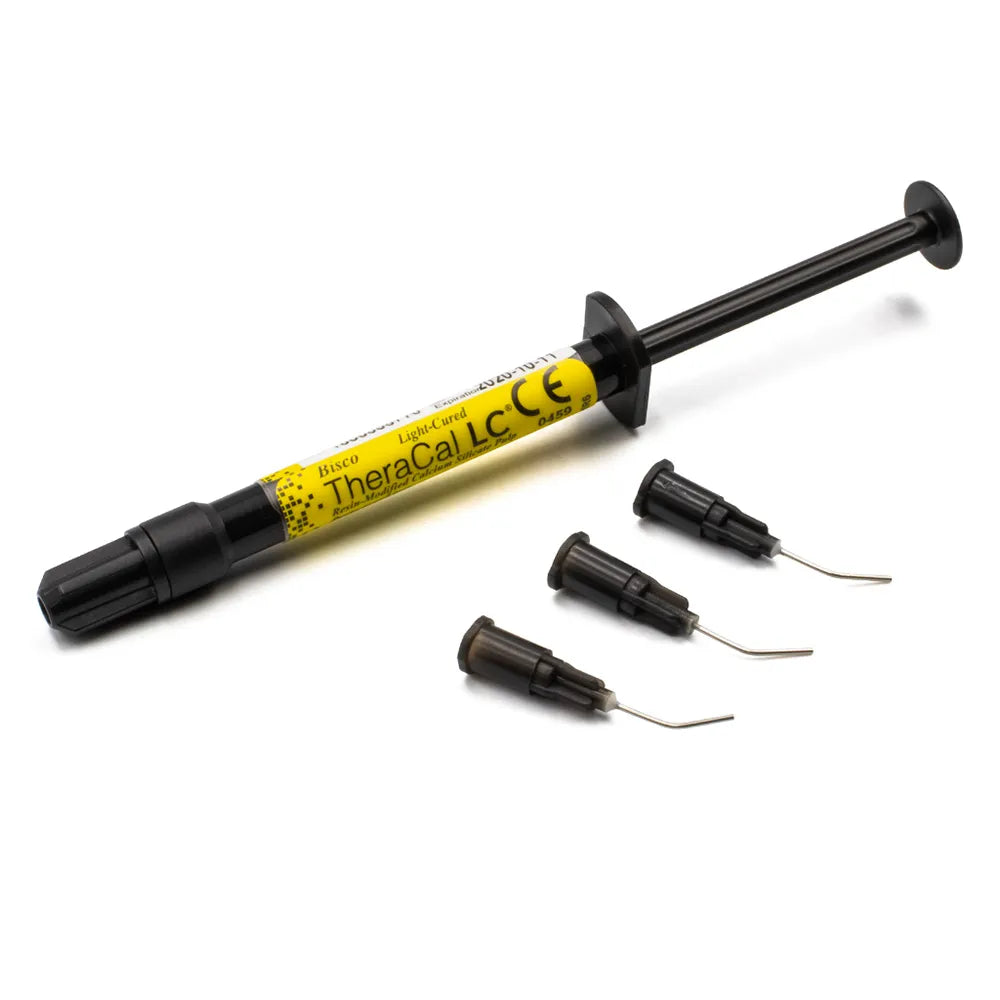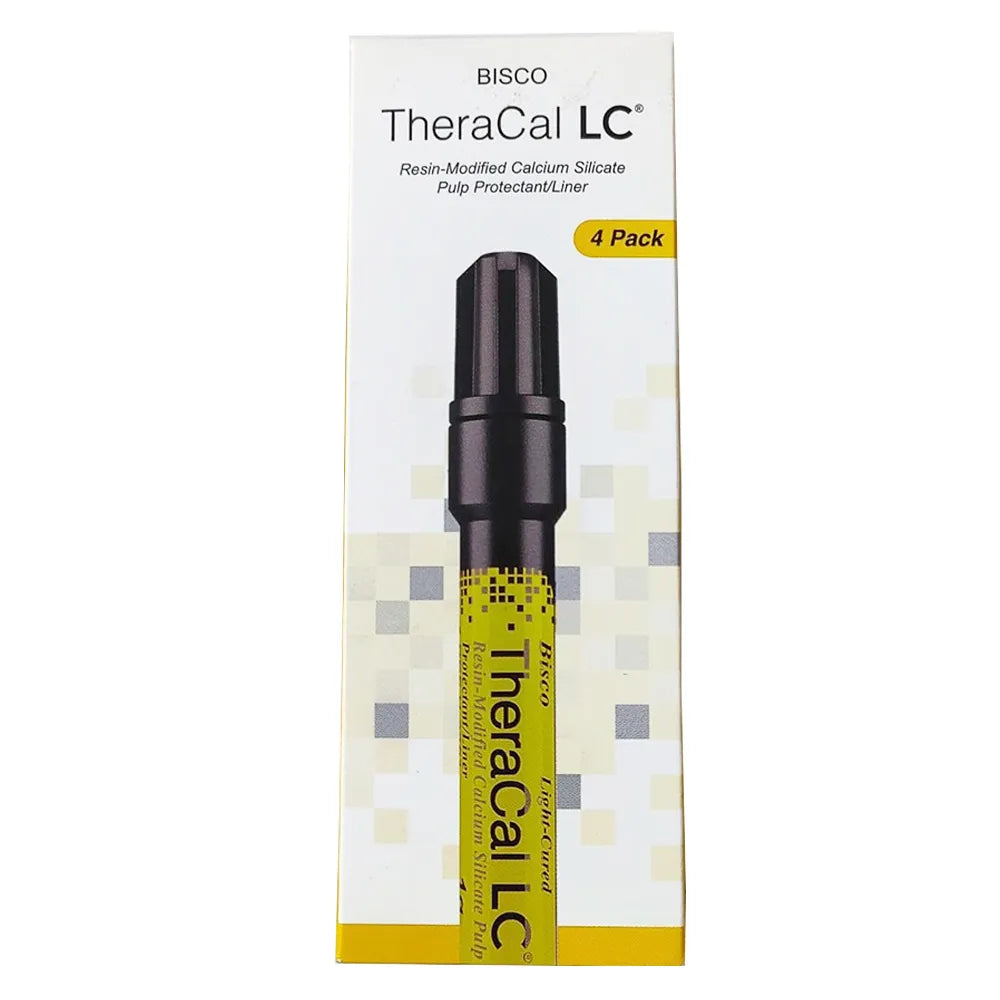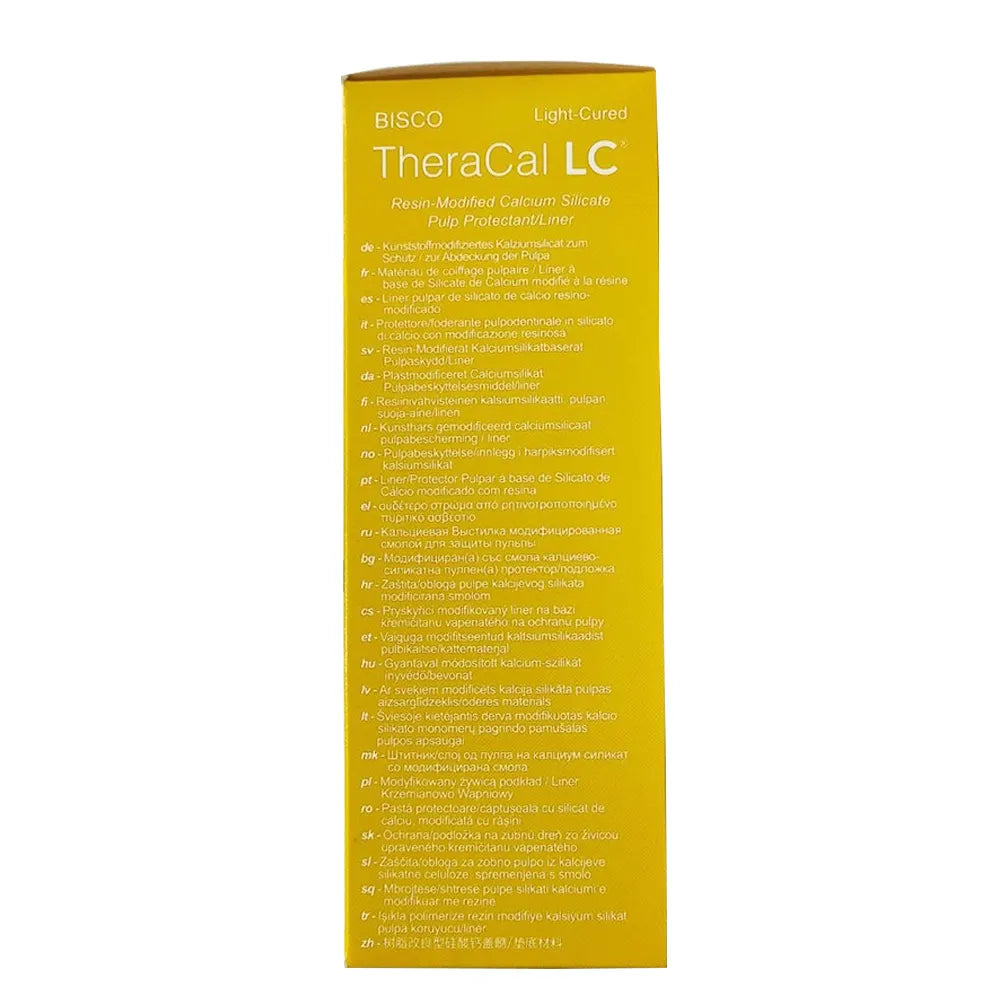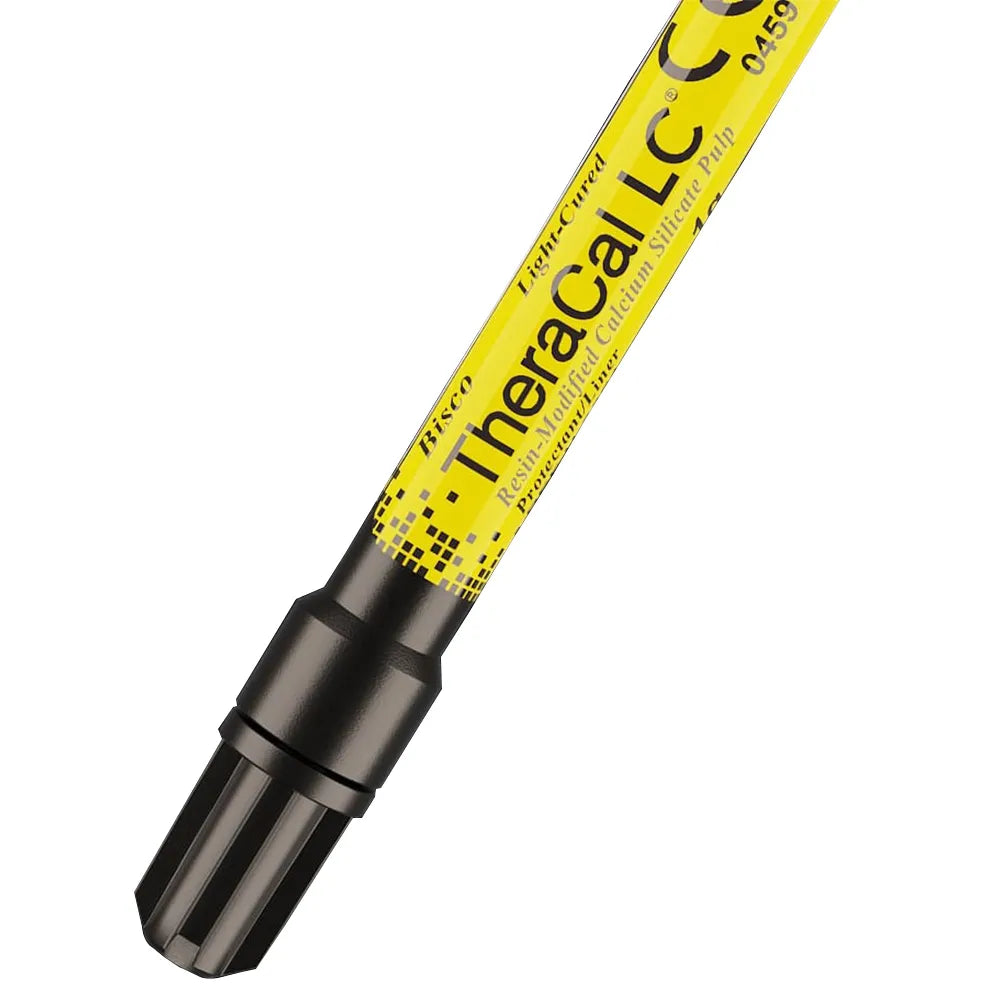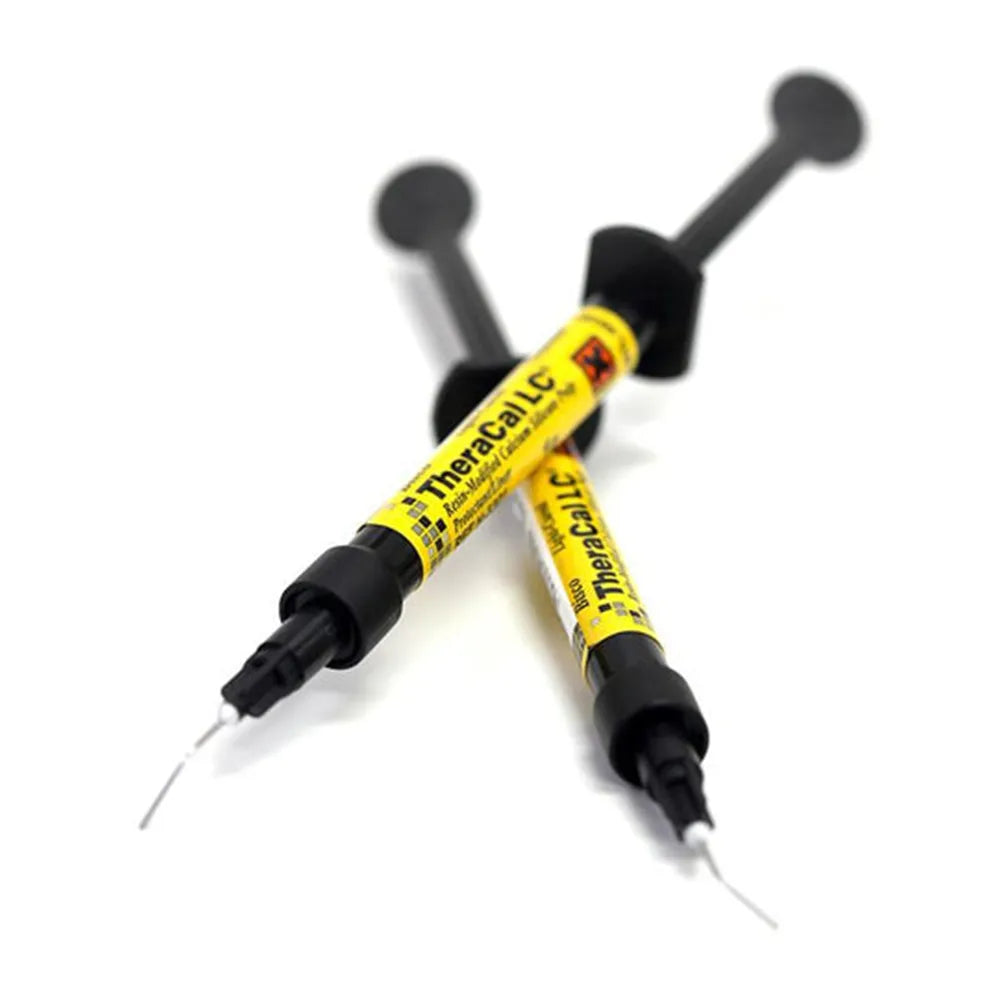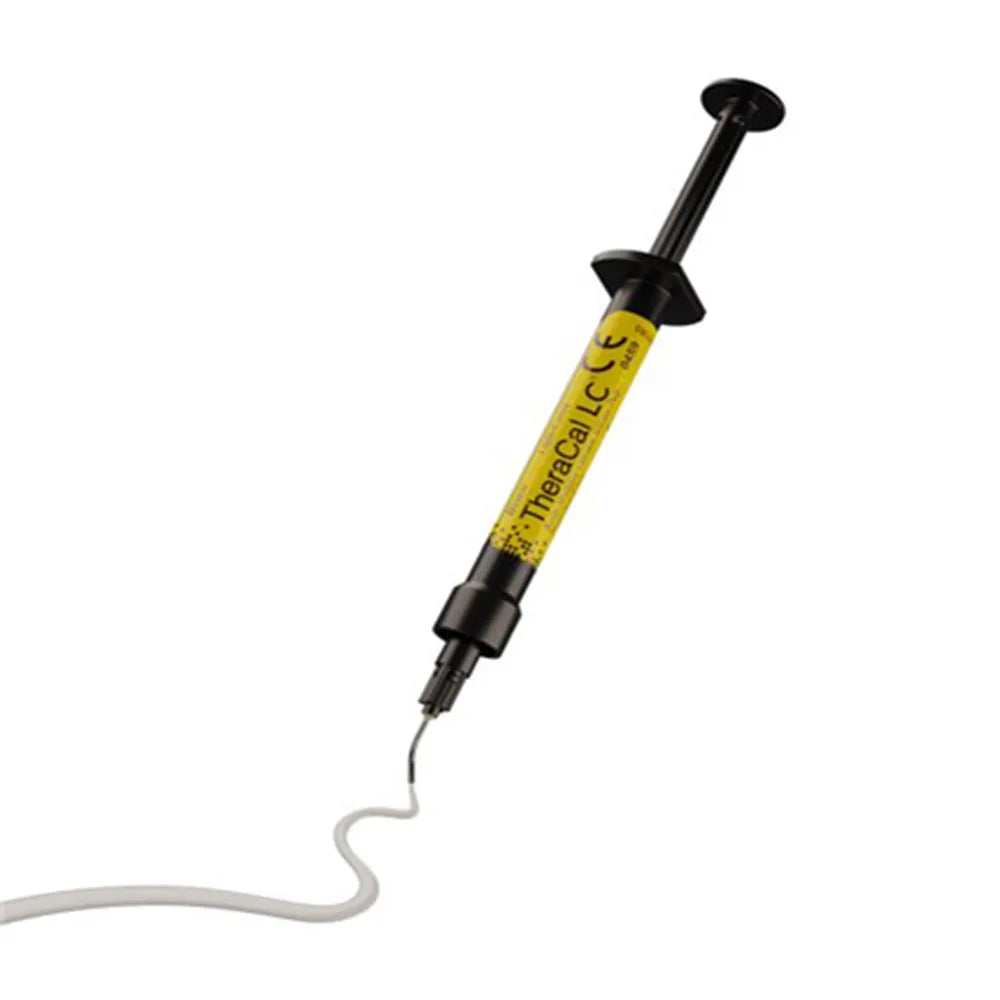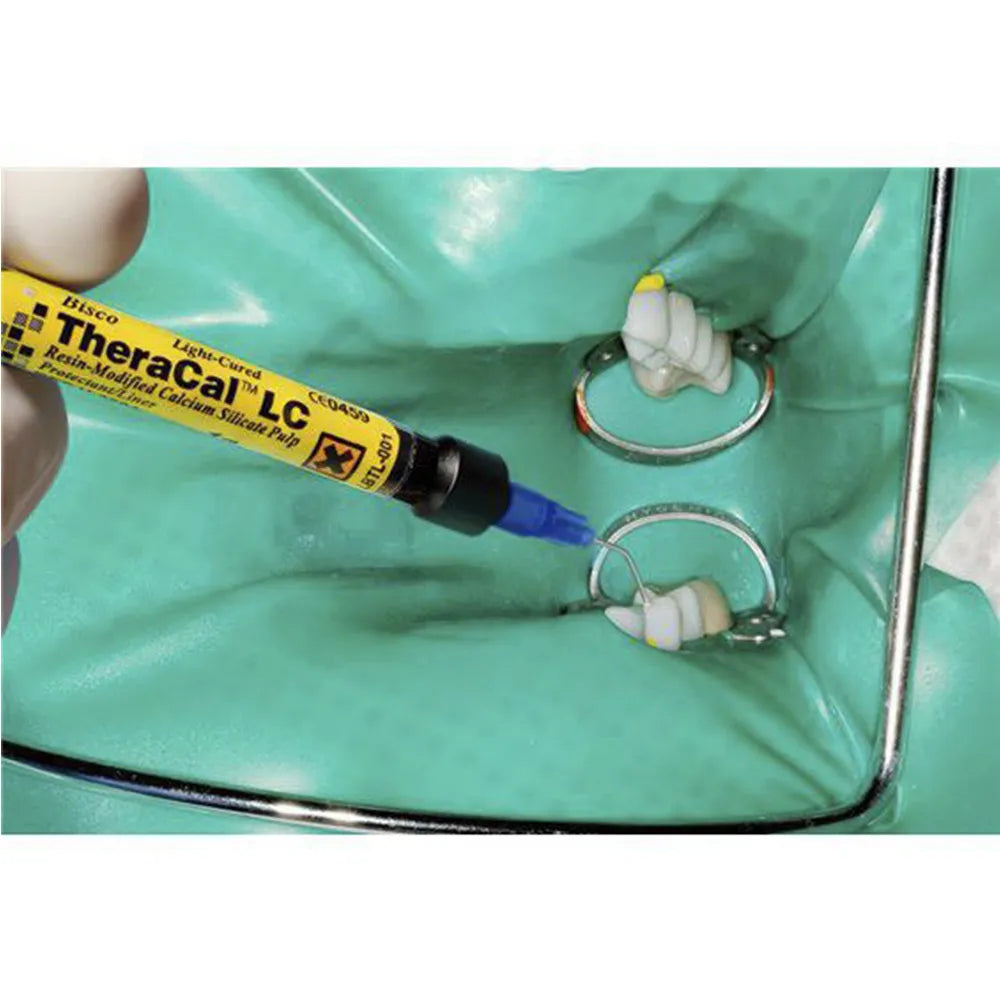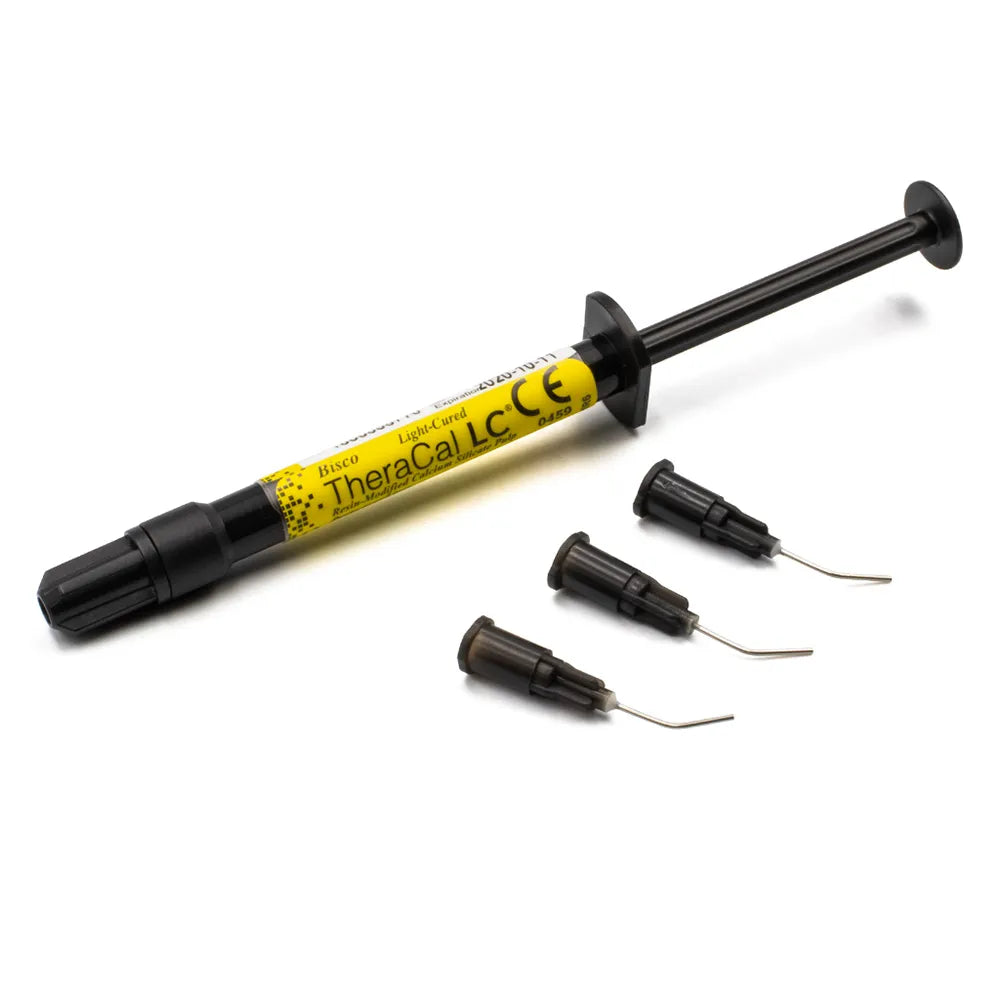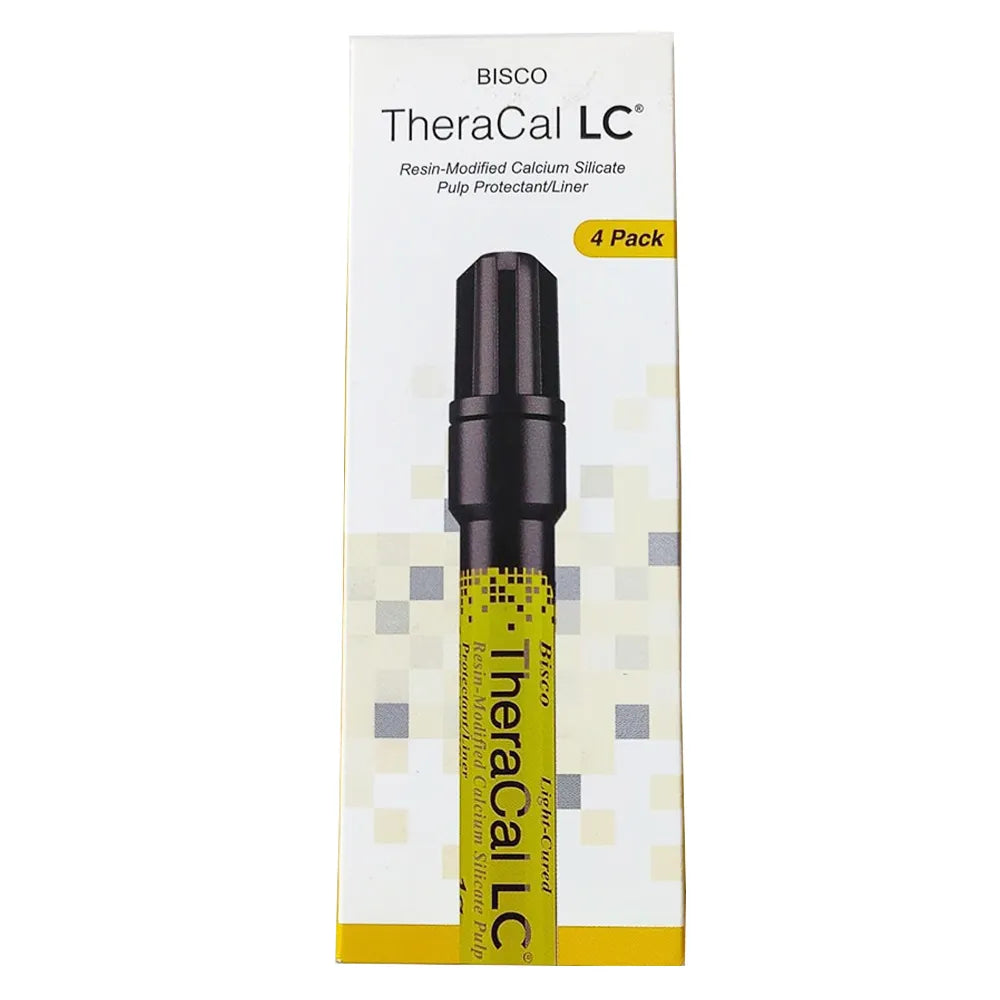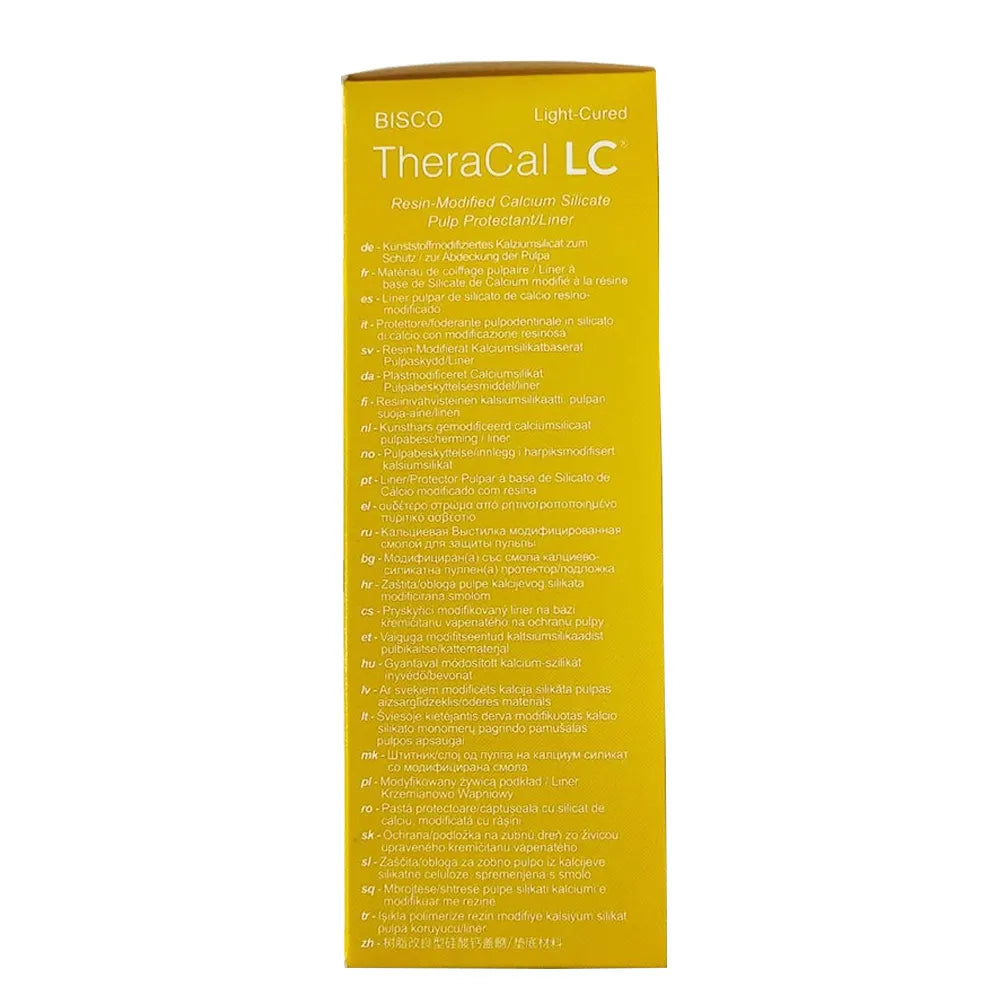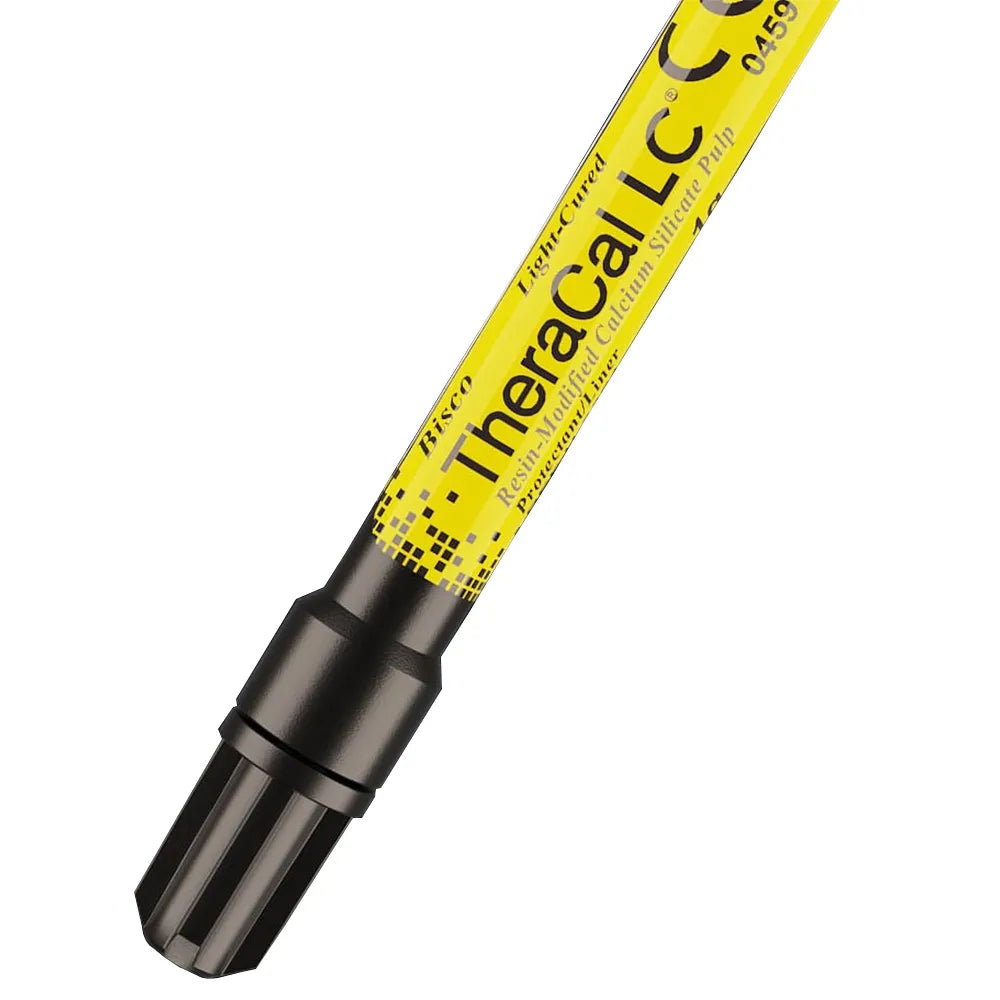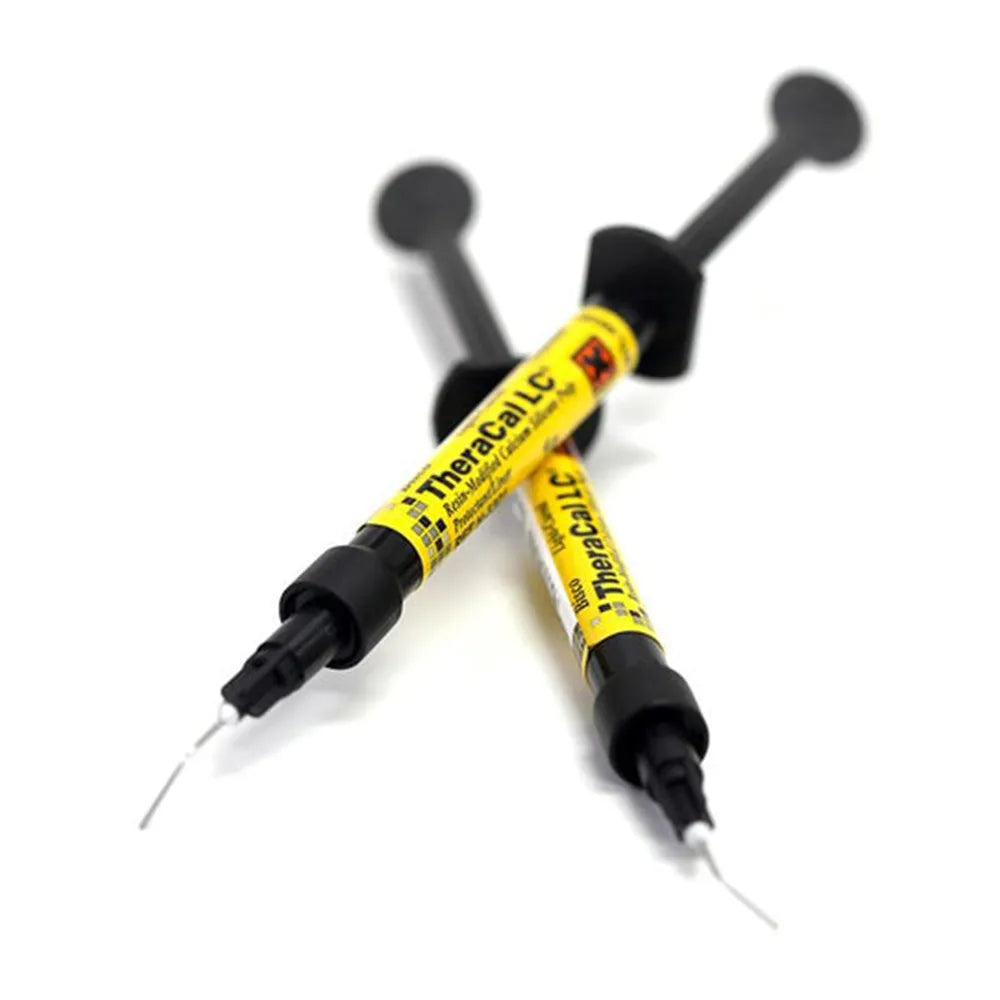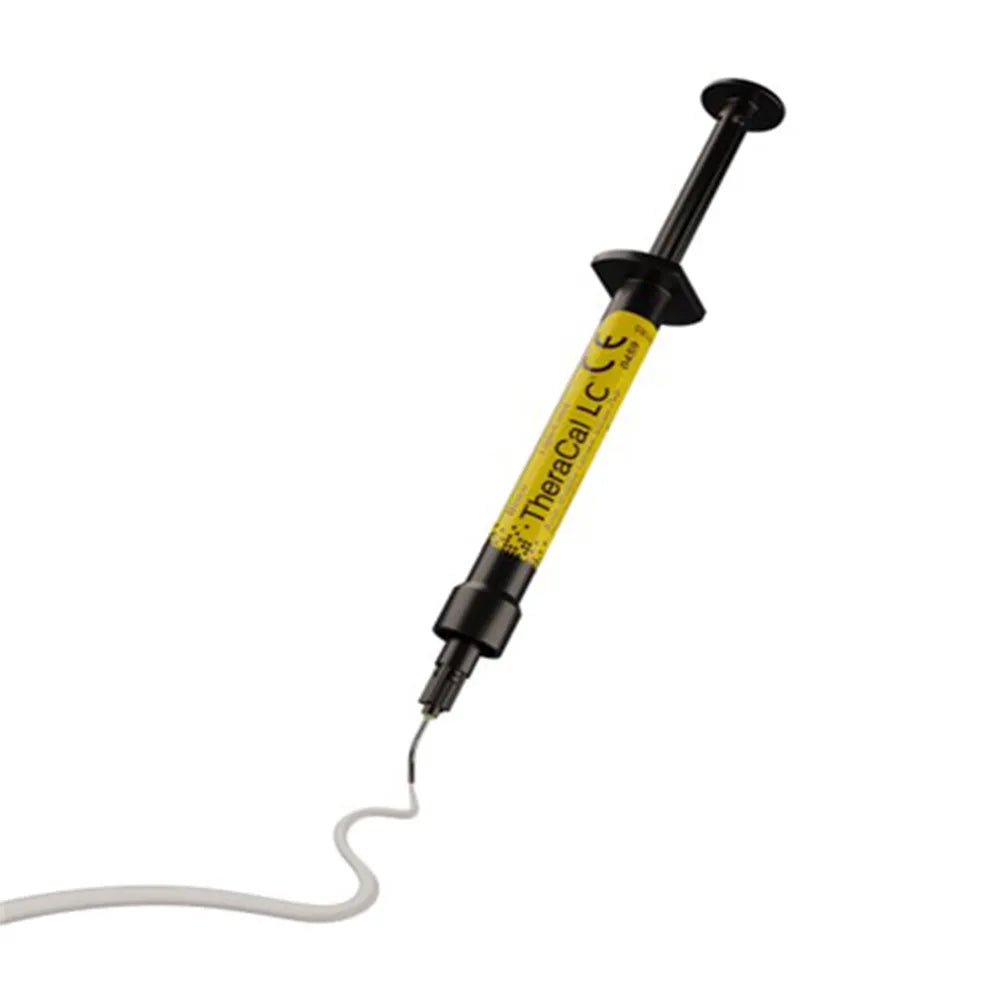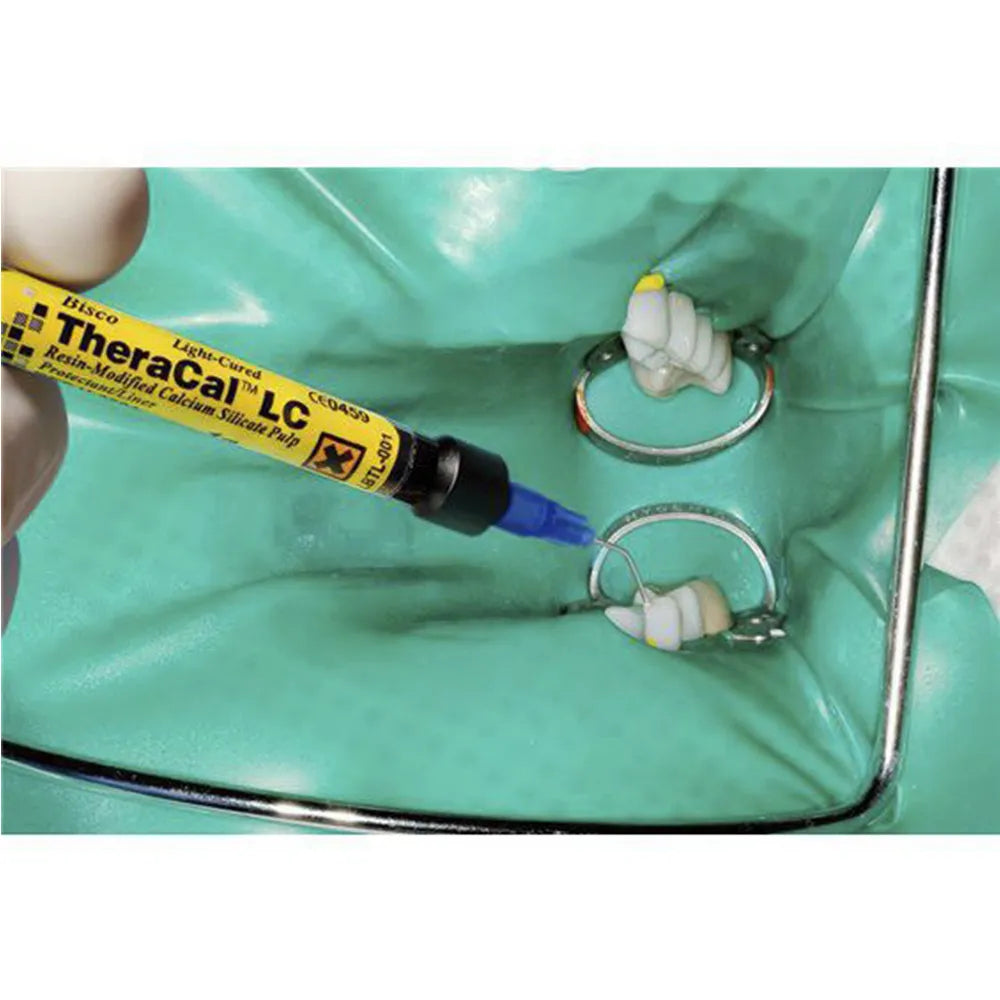bisco
Bisco TheraCal LC Light Cure Resin Cavity Liner Syringe
Bisco TheraCal LC Light Cure Resin Cavity Liner Syringe
Couldn't load pickup availability
TheraCal LC is a light-cured, resin-modified calcium silicate-filled liner designed for use in direct and indirect pulp capping and as a protective liner under composites, amalgams, cement, and other base materials. It can be used as an alternative to calcium hydroxide, glass ionomer, RMGI, IRM/ZOE, and other restorative materials. TheraCal LC performs as a barrier and protectant of the dental pulpal complex.
TheraCal LC’s precise placement allows its use in all deep cavity preparations. The light-cured set permits immediate placement and condensation of the restorative material. Its proprietary formulation allows for a command set with a light-curing unit while maintaining ease of placement due to thixotropic properties. The proprietary hydrophilic resin formulation creates a stable and durable liner.
Clinical Significance:
- The proprietary formulation of TheraCal LC consists of tri-calcium silicate particles in a hydrophilic monomer that provides significant calcium release making it a uniquely stable and durable material as a liner or base.
Features
Features
- Calcium release stimulates hydroxyapatite and secondary dentin bridge formation.
- Alkaline pH promotes healing and apatite formation.
- Significant calcium release leads to a protective seal.
- Protects and insulates the pulp.
- Moisture tolerant and radiopaque – can be placed under restorative materials and cement.
Description
Description
Specification
Specification
Storage:
- Store at room temperature (20°C/68°F - 25°C/77°F)
Packaging
Packaging
Bisco TheraCal LC Light Cure Resin Cavity Liner Single Syringe
- 1 x 1gm Syringe
Bisco TheraCal LC Light Cure Resin Cavity Liner 4 Syringe
- 4 x 1gm Syringe
- Accessories
Direction to use
Direction to use
1. Pulp Exposures (Direct Pulp Capping)
- Under rubber dam isolation, complete cavity preparation.
- Control bleeding by placing a sterile cotton pellet dampened with sterile saline. Blot
preparation with cotton pellet. Leave visibly moist. - Apply TheraCal LC directly to the exposed pulp in incremental layers. The layer is not to exceed 1 mm in depth. Cover all the exposed areas and extend TheraCal LC at least 1 mm onto sound dentin surrounding the exposure. Light cure between layers.
- Light cure each increment for 20 seconds. Place desired adhesive, base, and/or restoration following manufacturer’s directions. Continue restoring the tooth.
2. Deep Preparations (Indirect Pulp Capping), Large Preparations (Liner), Base or Sealer
- Isolate the tooth and perform conventional cavity preparation. Remove all infected carious tooth structures. Leave preparation visibly moist.
- Apply TheraCal LC directly to the cavity floor of the preparation in incremental layers. The layer is not to exceed 1 mm in depth. Manipulate into a smooth surface covering all deep dentin areas. Light cure between layers.
- Light cure each increment for 20 seconds. Place desired adhesive, base, and/or restoration following manufacturer’s directions. Continue restoring the tooth.
Additional info
Additional info
Warranty
Warranty
Product Related Questions
Product Related Questions
Question: What are the differences and similarities between TheraCal LC and Mineral Trioxide Aggregate (MTA) material?
Answer: TheraCal LC is a resin-modified calcium tri-silicate that has enhanced physical properties when compared to MTA material. Essentially, the primary chemical used in both materials is similar (Portland cement) but TheraCal LC contains a patent-pending hydrophilic resin, which allows for immediate light curing and facilitates calcium release. Similar to MTA material, TheraCal LC promotes healing due to the alkaline pH, and the calcium release assists in the formation of dentin bridge.
Question: What is the difference between TheraCal LC and Calcium Hydroxide
Answer: Calcium hydroxide is the primary chemical contained in many dentin liners and pulp capping agents. One of the known limitations of calcium hydroxide-based materials is their relatively high solubility, which leads to the dissolution of the material over time.
Question: Do I need to bond before placing TheraCal LC?
Answer: Bonding is not required or recommended before placement of TheraCal LC on dentin. TheraCal LC allows the maximum amount of calcium release. However, in a non-retentive preparation (such as a Class V non-carious cervical lesion), a bonding agent may be used prior to placement of TheraCal LC for an enhanced bond.
Question: I am using RMGI for liners and pulp-capping; why should I switch?
Answer: TheraCal LC promotes hydroxyl-apatite formation through ion/water exchange with the tooth structure. Resin-modified glass ionomers are unable to promote the hydroxyl-apatite formation and have been shown to be cytotoxic to the pulpal complex. Due to the inclusion of polyacrylic acid, RMGI’s may actually inhibit apatite formation.
Question: What can I use TheraCal LC for?
Answer: TheraCal LC can be used as a liner under all restorative materials. It can also be used as a direct or indirect pulp-capping agent. TheraCal LC is virtually insoluble when compared to other traditional calcium hydroxide-based liners and pulp-capping agents.
Question: Can TheraCal LC be used in pediatric cases for either direct or indirect pulp capping?
Answer: Yes. TheraCal LC is indicated for both direct and indirect pulp capping and can be used safely with pediatric patients. TheraCal LC will provide pulpal protection and decrease the risk of post-operative sensitivity in cases where deep preparations are needed, or where carious or mechanical exposures occur. The ability to light-cure the material will allow for faster working time as well, which may be helpful when dealing with younger patients.
Share
